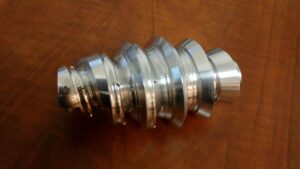Photosensors are utilized for the location of light. The normally observed photosensors are photocells used to recognize the presence of light transmitting normally from some item all the while. For instance, the gadget sold in the market to turn a light on at nightfall and off at day break is a photosensor. A significant number of the modern photosensors utilize a counterfeit light source rather than the sun. Photosensors are on/off switches that change state because of light radiation. They are an option in contrast to closeness sensors when the detecting distance is longer or when the thing to be distinguished is nonmetallic. Based on reflecting surfaces, reflectors are of three sorts, specifically, diffusive reflectors, specular reflectors, and retroreflectors, as appeared in china precision machining services manufacturers. Diverse photosensors will have distinctive reflector necessities. A diffusive surface can be any level surface as long as it can mirror light. A specular reflector is a smooth surface, for example, a mirror, and along these lines just when the light is pointing from a specific heading, can the sensor identify it. The light source and recipient are put at a specific point. This can specifically enact the sensor for the light source from a specific bearing. A retroreflector can mirror the light a similar way from which it comes.
On account of this trademark, it is constantly used to make wellbeing signs, for example, the back lights of bikes and vehicles and the security outfits worn by individuals working around evening time. plastic or metal machining parts china shows an illustration of utilizing a retroreflector.
The cycle for choosing a sensor for a specific application in a mechanization framework incorporates the accompanying advances. The initial step is to figure out where a sensor might be required or all the more explicitly, “What would I like to detect,” “Where am I imparting the sign,” “What type of yield is required,” and”What signal molding will be required?” This includes distinguishing the elements of the framework and recognizing the regions of center for the framework.
The zones of center incorporate the workpiece itself and the parts of the mechanized framework. Sensors are chosen for robotization relying on the application and environment,including review, ordering part train, discovering parts (like for a robot), edge-discovering, heat recognition, nearness identification, liquid stream estimation, shaft position, power and force, speed, wellbeing (light shade, substance location), pressure, and so forth The following stage is to decide whether a sensor should be utilized in a specific circumstance. On the off chance that a specific activity in a robotized framework is basic, a sensor should be executed to screen the framework of oem rapid aluminum prototype factory.
When a choice has been made to fuse a sensor, a few elements might be considered before a particular kind of sensor can be picked. The main factor to consider is the force hotspot for the sensor. Force sources can be AC or DC with a scope of voltages. Normally, power for the sensors should come from a steady source. The following component is the properties of the thing or highlight that should be identified by the sensor. The actual properties of the thing – size, material, shading, goal, cost, dependability, climate and foundation, scope of identification, and so on will decide the kinds of sensors that might be utilized in china rapid prototype machining. The last factor to be considered is the ecological conditions in which the sensor will work. These components will help to recognize a sensor type or types that will have the option to give precise, dependable, and practical execution in the framework.
This article is from http://www.prototypechina.com/
